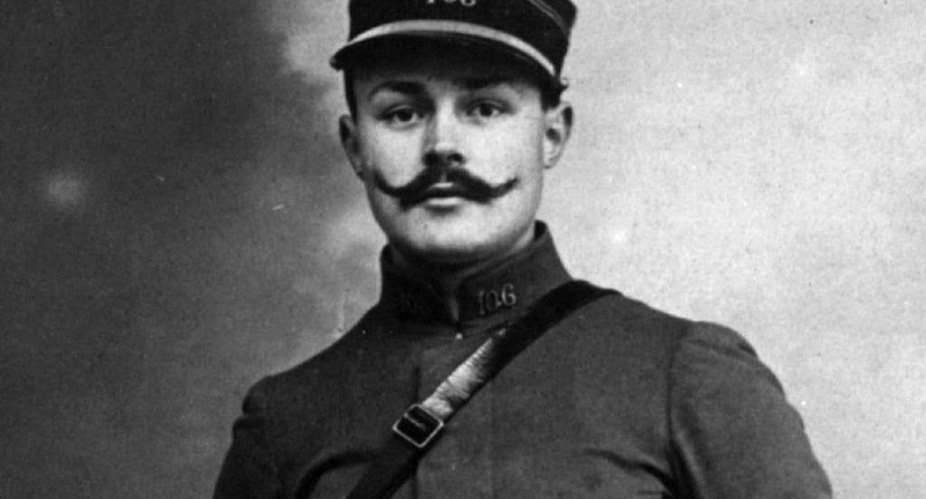The French writer Maurice Genevoix makes his entrance Wednesday at the Panthéon during a ceremony presided over by Emmanuel Macron. The former WWI soldier will be honoured for his commitment to the memory of his comrades who fought in the trenches in 1914 and for his literary career.
The moving of Genevoix's remains in the Panthéon had initially been scheduled for last year, but was delayed to coincide with the 100th anniversary of the burial of the unknown soldiers in the Arc de Triomphe.
"Genevoix was the voice of memory. Through him, the voice of the 'Men of 14' never ceases to urge us not to drop our guard and to preserve our vigilance when the worst reappears again," Macron said when he announced the move.
Maurice Genevoix wrote five memoirs of his time as a frontline soldier experiencing the horrors of trench warfare in the 1914-18 conflict, which he later collected into a single book Ceux de 14 ("Men of 14").
The voice of the 'Men of 14'
His work is considered by many to be the single greatest literary work to have emerged in French from the World War I, with its raw insight into the experience of battle drawing comparisons with Storm of Steel by German writer Ernst Juenger or the English poetry of Wilfred Owen.
Genevoix participated in the battle of the Marne and the march on Verdun. Promoted to lieutenant, he saw the daily life of the infantryman -- the mud, the blood, the storms of steel, what he called all this "insane farce".
Genevoix, then 24, was badly wounded in April 1915 and hospitalised for seven months, and began to write from notes made in the trenches, with his first memoir published as war still raged in 1916.
"What we did was more than could be asked of men and we did it," he writes in the work.
In later life he wrote novels and also became a champion of ecological causes. He died aged 89 in 1980.
Entering the Panthéon
The Panthéon is a secular temple to France's literary luminaries such as Voltaire, Rousseau, Dumas, Hugo and Malraux as well as other great figures from culture, science and politics.
The remains of 70 men are housed under the great dome of the neo-classical building but only five women have been given the honour.
Only the president can decide on moving personalities to the Pantheon, and Macron has used this authority just once before, in 2018, to give Simone Veil, a former French minister who survived the Holocaust, the honour of a final resting place there.
While the final choice rests with the president, the move can always be vetoed by descendants, as happened when the family of Albert Camus thwarted a bid in 2009 by then president Nicolas Sarkozy to move his remains to the Pantheon.
Macron will preside over Wednesday's ceremony, which is taking place on the November 11 Armistice Day that remembers the dead in the world wars.
Marking 102 years since the end of World War I, an installation by French composer Pascal Dusapin and German artist Anselm Kiefer commissioned by the Elysee will be put in the Pantheon.
(with AFP)





 There’s nothing you can do for us; just give us electricity to save our collapsi...
There’s nothing you can do for us; just give us electricity to save our collapsi...
 Ghanaian media failing in watchdog duties — Sulemana Braimah
Ghanaian media failing in watchdog duties — Sulemana Braimah
 On any scale, Mahama can't match Bawumia — NPP Youth Organiser
On any scale, Mahama can't match Bawumia — NPP Youth Organiser
 Never tag me as an NPP pastor; I'm 'pained' the 'Akyem Mafia' are still in charg...
Never tag me as an NPP pastor; I'm 'pained' the 'Akyem Mafia' are still in charg...
 Your refusal to dedicate a project to Atta Mills means you never loved him — Kok...
Your refusal to dedicate a project to Atta Mills means you never loved him — Kok...
 2024 elections: I'm competent, not just a dreamer; vote for me — Alan
2024 elections: I'm competent, not just a dreamer; vote for me — Alan
 2024 elections: Forget NPP, NDC; I've the Holy Spirit backing me and nothing wil...
2024 elections: Forget NPP, NDC; I've the Holy Spirit backing me and nothing wil...
 2024 elections: We've no trust in judiciary; we'll ensure ballots are well secur...
2024 elections: We've no trust in judiciary; we'll ensure ballots are well secur...
 Performance tracker: Fire MCEs, DCEs who document Mahama's projects; they're not...
Performance tracker: Fire MCEs, DCEs who document Mahama's projects; they're not...
 Train crash: Railway ministry shares footage of incident
Train crash: Railway ministry shares footage of incident
